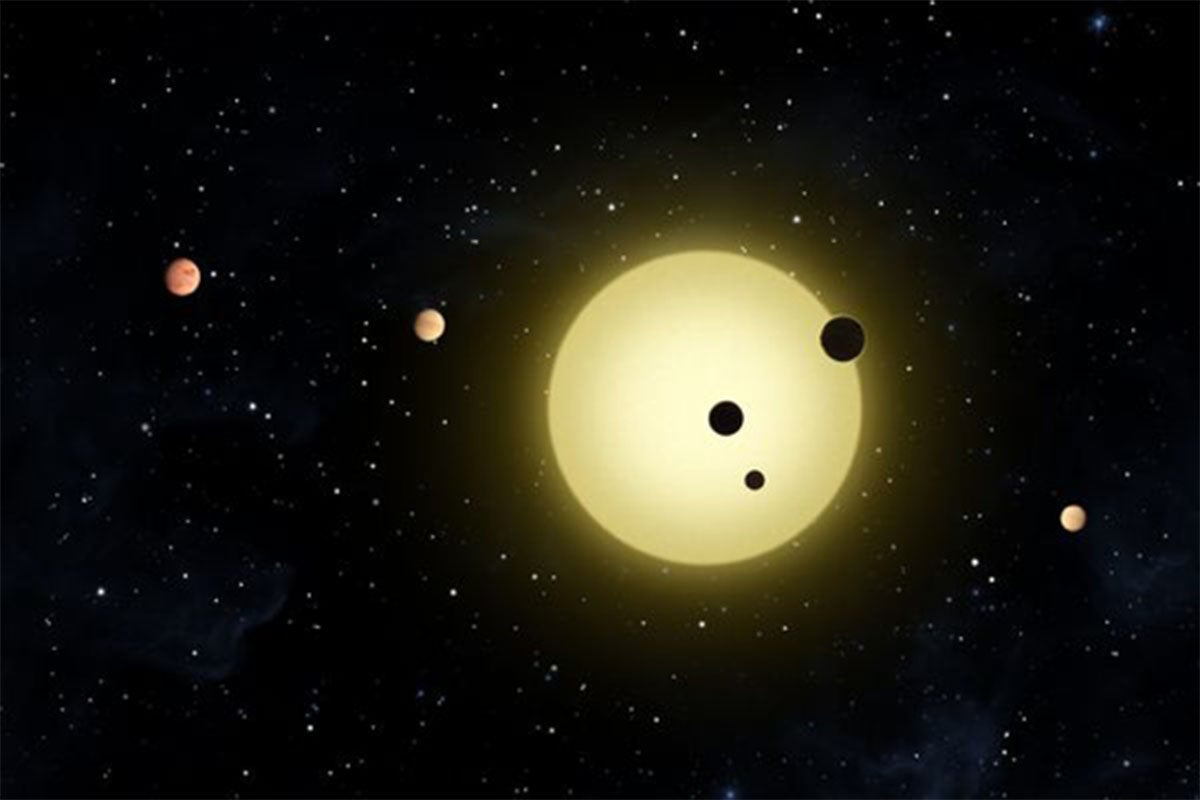Only a handful of the roughly 4,000 identified planets outside our solar system can potentially support human life — what experts call “habitable exoplanets” — but astronomers are certain there are many more.
The best candidates were found when they crossed in front of the star they orbit. A silhouette is hard to analyze for life-sustaining conditions, particularly against the brilliant light of a star.
Enter a new $772,000 NASA project, which aims to narrow the search by developing a new way of seeing the colors a planet emits. The elements that make up breathable atmospheres and water sources emit specific wavelengths of light (color). Theodora Karalidi, an assistant professor of physics at UCF, is working with a national team to build an inventory of those wavelengths. Then, astronomers can look for those signature colors when making observations of any exoplanet through telescopes. These color profiles will be created with technology similar to that used in the polarization of sunglasses, which breaks down the wavelengths of light
“We expect to find more candidates for planets with ideal conditions for life,” Karalidi says. “This project will take us to the next step and identify which ones truly hold the potential for life.”

An exoplanet is a planet that revolves around a star other than our own sun. There are a projected 100 thousand million exoplanets in the Milky Way Galaxy, and many billions more beyond that. Far fewer of those exoplanets fall into what’s called the “Goldilocks Zone,” the area that’s just the right distance from its star to not be too hot or cold. Even fewer planets have the rocky surface, atmosphere and water that can sustain life.
Karalidi, who joined UCF in 2019, is working with scientist from the Jet Propulsion Laboratory in California and the University of California at Riverside on the three-year project. Karalidi said the funding is a dream come true for someone who grew up fascinated with movies like ET and Star Trek. While pop culture planted the seeds of her astronomy interest, it was really a cheap telescope given to her as a child that allowed it to take root.
“The first time I looked through the telescope I was completely awed by space. I was hooked after that,” Karalidi says.
Karalidi has a doctorate from the University of Leiden in the Netherlands. Her work focuses on modeling the spectropolarimetric signal of exoplanet and brown dwarf atmospheres. Karalidi is also working on mapping exoatmospheres using observational light curves. She spent four years as a postdoctoral researcher at the University of Arizona, and one and half years at the University of California Santa Cruz before coming to UCF.





